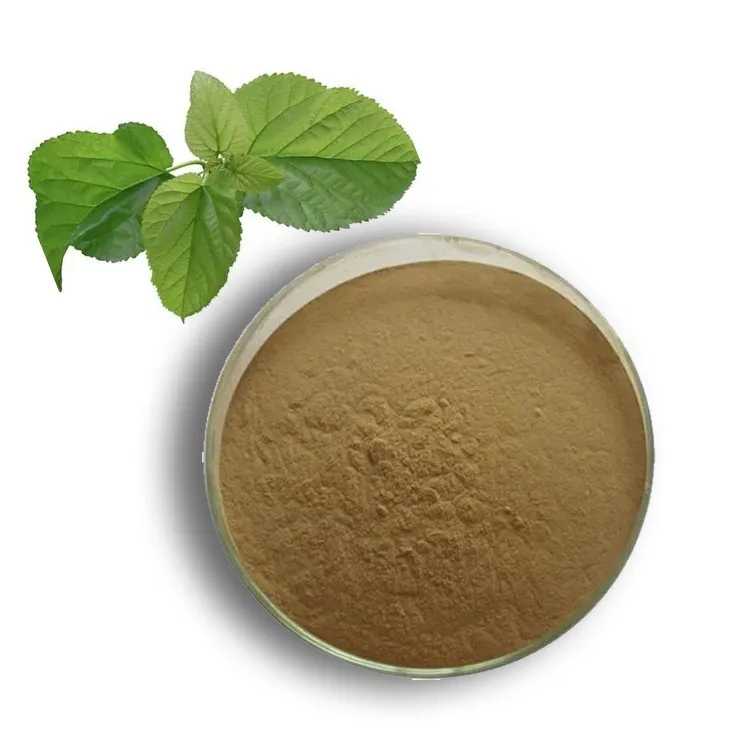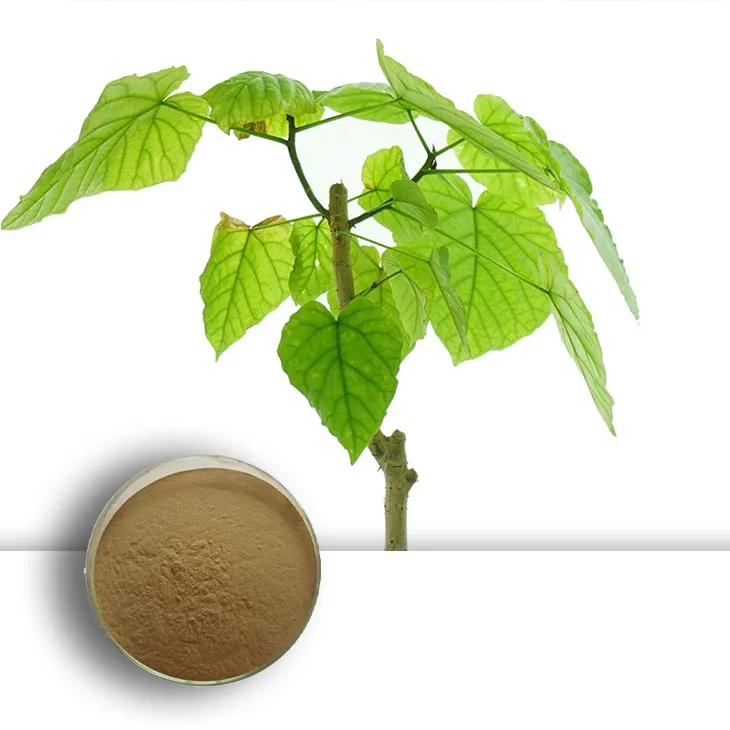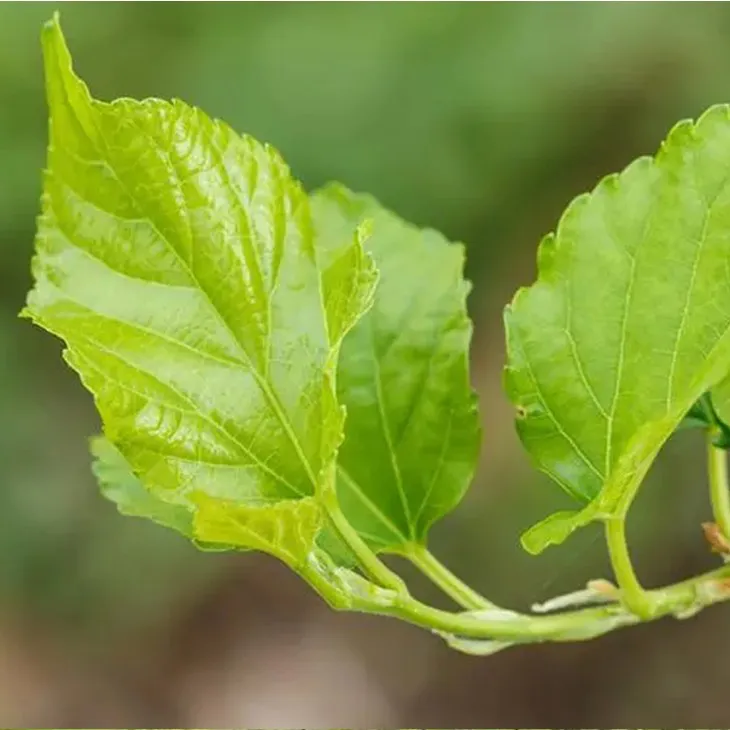- 0086-571-85302990
- sales@greenskybio.com
How to Extract Mulberry Leaf Extract by Steam Distillation.
2024-11-27

1. Introduction to Mulberry Leaves for Extraction
Mulberry leaves are rich in various bioactive compounds, which make them a valuable source for extraction. These leaves contain flavonoids, alkaloids, polysaccharides, and other substances. Flavonoids, such as rutin and Quercetin, are known for their antioxidant properties. Alkaloids in mulberry leaves may have potential physiological effects on the human body. The polysaccharides also play important roles in various biological activities.
The chemical composition of mulberry leaves is complex, and different components may have different solubilities and volatilities. These characteristics are crucial when considering the extraction method. Steam distillation is a suitable method as it can effectively separate volatile components from the leaves while leaving behind non - volatile substances.

2. The Steam Distillation Mechanism
2.1 Basic Principle Steam distillation is based on the fact that when a mixture of two immiscible liquids (in this case, water and the volatile components in mulberry leaves) is heated, the total vapor pressure above the mixture is equal to the sum of the vapor pressures of the individual components. Since water has a relatively high vapor pressure at a given temperature, it can carry the volatile components of the mulberry leaves into the vapor phase.
2.2 Phase Changes As the mixture is heated, water turns into steam, and the volatile components in the mulberry leaves also vaporize. The steam - volatile component mixture then rises through the distillation apparatus. In the condenser, the vapor is cooled and condensed back into a liquid phase. The resulting liquid contains both water and the extracted volatile components from the mulberry leaves.

3. Steam Distillation Techniques
3.1 Apparatus Setup The basic steam distillation apparatus consists of a heating source, a distillation flask containing the mulberry leaves and water, a condenser, and a receiving flask. The distillation flask should be large enough to hold the leaves and an appropriate amount of water. The condenser is used to cool the vapor back to a liquid. A thermometer is often inserted into the distillation flask to monitor the temperature.
3.2 Preparation of Mulberry Leaves
- The mulberry leaves should be thoroughly washed to remove any dirt, pesticides, or other contaminants. This can be done by rinsing the leaves under running water multiple times.
- After washing, the leaves need to be dried. This can be achieved by air - drying or using a low - temperature drying oven. It is important to ensure that the leaves are not over - dried, as this may affect the extraction efficiency.
- The dried leaves are then ground into a suitable particle size. Generally, a smaller particle size can increase the surface area available for extraction, but if the particles are too small, it may lead to clogging in the distillation apparatus.
3.3 The Distillation Process
- Place the prepared mulberry leaves and an appropriate amount of water into the distillation flask. The ratio of leaves to water can vary depending on the extraction requirements, but a common ratio is around 1:5 to 1:10 (leaf mass to water volume).
- Slowly heat the distillation flask using the heating source. The heating rate should be controlled to avoid rapid boiling, which may cause splashing of the mixture or incomplete extraction.
- As the mixture heats up, steam will start to form and carry the volatile components from the mulberry leaves into the condenser. The temperature in the distillation flask should be monitored. For Mulberry leaf Extraction, the temperature typically ranges from 100 - 120°C, depending on the specific components being extracted.
- The condensed liquid in the receiving flask contains the Mulberry leaf Extract along with water. This mixture can be further processed to separate the extract from the water.

4. Enhancing Extraction Effectiveness
4.1 Steam Flow Rate The steam flow rate is an important factor in steam distillation. A higher steam flow rate can increase the mass transfer rate of the volatile components from the mulberry leaves to the vapor phase. However, if the steam flow rate is too high, it may lead to incomplete condensation or carry - over of non - volatile substances. An optimal steam flow rate needs to be determined through experimentation. For Mulberry leaf Extraction, a steam flow rate of around 1 - 2 L/min may be a good starting point, but this may need to be adjusted based on the specific apparatus and extraction conditions.
4.2 Leaf Particle Size As mentioned earlier, the particle size of the mulberry leaves affects the extraction efficiency. A smaller particle size generally increases the surface area available for extraction. However, there is a limit. If the particle size is too small, it may cause problems such as clogging in the distillation apparatus. Through experiments, it has been found that a particle size in the range of 0.5 - 2 mm can provide a good balance between extraction efficiency and practical operation in the steam distillation of mulberry leaves.
4.3 Repetition of the Distillation Process Repeating the steam distillation process can improve the extraction yield. By conducting multiple distillations on the same batch of mulberry leaves, more of the volatile components can be extracted. For example, a second distillation can be carried out on the residue left in the distillation flask after the first distillation. The extracts from each distillation can be combined to obtain a more comprehensive mulberry leaf extract.
5. Post - Extraction Handling and Purification
5.1 Separation of Extract from Water After the steam distillation, the extract is in a mixture with water. One common method to separate them is by using a separating funnel. Since the extract and water may have different densities, they can be separated by allowing the mixture to stand in the separating funnel for a period of time until two distinct layers form. The lower layer (usually water) can be drained off, and the upper layer (the extract) can be collected.
5.2 Drying the Extract The separated extract may still contain some moisture. Drying can be achieved using methods such as rotary evaporation or freeze - drying. Rotary evaporation is a common method in the laboratory. The extract is placed in a rotary evaporator, and the solvent (in this case, water) is removed under reduced pressure and at a controlled temperature. Freeze - drying is another option, especially for heat - sensitive extracts. It involves freezing the extract and then sublimating the water directly from the frozen state.
5.3 Purification of the Extract To obtain a more pure mulberry leaf extract, purification steps may be necessary. Chromatographic techniques such as column chromatography or high - performance liquid chromatography (HPLC) can be used. Column chromatography involves passing the extract through a column filled with a stationary phase. Different components in the extract will interact differently with the stationary phase and elute at different times, allowing for separation. HPLC is a more advanced technique that can provide higher resolution separation based on the different chemical properties of the components in the extract.
6. Potential Applications of Mulberry Leaf Extracts
6.1 In the Food Industry Mulberry leaf extracts can be used as natural food additives. Their antioxidant properties can help to preserve food by preventing oxidative rancidity. They can also be added to functional foods, such as beverages or health bars, to provide additional health benefits. For example, the flavonoids in the extract may have anti - inflammatory properties, which are beneficial for consumers' health.
6.2 In the Pharmaceutical Field The bioactive components in mulberry leaf extracts have shown potential in pharmaceutical applications. Some studies suggest that the alkaloids in the extract may have hypoglycemic effects, which could be useful in the treatment of diabetes. Flavonoids may also have potential anti - cancer properties, although more research is needed to fully understand their mechanisms of action. Additionally, the extracts may have potential in the development of drugs for cardiovascular diseases due to their antioxidant and anti - inflammatory properties.
6.3 In Cosmetics Mulberry leaf extracts can be incorporated into cosmetics for their antioxidant and skin - whitening properties. The flavonoids and other components can help to protect the skin from free - radical damage and may also inhibit the production of melanin, resulting in a skin - whitening effect. They can be used in products such as creams, lotions, and serums.
FAQ:
What are the main components in mulberry leaves relevant to extraction?
Mulberry leaves contain various components such as flavonoids, alkaloids, and polysaccharides. These components are of great significance in extraction as they can have different properties and potential applications. Flavonoids, for example, are known for their antioxidant properties, and alkaloids may have certain physiological activities.
How does the steam distillation mechanism work in extracting mulberry leaf extract?
Steam distillation works based on the principle that when steam is passed through the mulberry leaves, the volatile components in the leaves vaporize along with the steam. The steam - volatile component mixture is then condensed. Since the volatile components have different solubilities and boiling points, they can be separated from the non - volatile substances in the leaves during this process. This allows for the extraction of the desired components from the mulberry leaves.
What is the influence of steam flow rate on the extraction of mulberry leaf extract?
The steam flow rate can significantly affect the extraction. A higher steam flow rate can increase the mass transfer rate between the steam and the mulberry leaves, which may lead to a faster extraction process. However, if the steam flow rate is too high, it may cause some problems. For example, it may lead to incomplete condensation of the steam - volatile component mixture, or it may damage some of the more delicate components in the leaves. On the other hand, a lower steam flow rate may result in a longer extraction time and potentially lower extraction efficiency.
How does leaf particle size affect the steam distillation extraction of mulberry leaf extract?
The leaf particle size is an important factor. Smaller leaf particle sizes increase the surface area available for interaction with the steam. This can enhance the extraction efficiency as more of the leaf's components are exposed to the steam. However, if the particles are too small, they may cause clogging in the extraction equipment. Larger leaf particle sizes, on the contrary, have a smaller surface - to - volume ratio, which may lead to a slower extraction process as less of the leaf's interior is accessible to the steam.
What are the common methods for post - extraction handling and purification of mulberry leaf extracts?
After extraction, common post - extraction handling methods include filtration to remove any solid residues. For purification, techniques such as chromatography can be used. Chromatography can separate different components in the extract based on their different affinities for the stationary and mobile phases. Another method could be solvent extraction, which can further purify the extract by selectively dissolving certain components in a particular solvent. Crystallization can also be employed in some cases to obtain pure compounds from the extract.
Related literature
- Steam Distillation of Plant Extracts: Principles and Applications"
- "Mulberry Leaf Components: Extraction and Their Potential in Food and Pharmaceutical Industries"
- "Enhancing the Efficiency of Steam Distillation in Herbal Extract Production"
- ▶ Hesperidin
- ▶ citrus bioflavonoids
- ▶ plant extract
- ▶ lycopene
- ▶ Diosmin
- ▶ Grape seed extract
- ▶ Sea buckthorn Juice Powder
- ▶ Beetroot powder
- ▶ Hops Extract
- ▶ Artichoke Extract
- ▶ Reishi mushroom extract
- ▶ Astaxanthin
- ▶ Green Tea Extract
- ▶ Curcumin Extract
- ▶ Horse Chestnut Extract
- ▶ Other Problems
- ▶ Boswellia Serrata Extract
- ▶ Resveratrol Extract
- ▶ Marigold Extract
- ▶ Grape Leaf Extract
- ▶ blog3
- ▶ blog4
-
The extraction process of jujube extract.
2024-11-27
-
Organic longan extract, Australia.
2024-11-27
-
The most highly - praised ivy extract.
2024-11-27
-
100% Pure Natural Mulberry Leaf Extract.
2024-11-27
-
100% Pure Natural Cactus Extract.
2024-11-27
-
Genistein Manufacturers from China.
2024-11-27
-
Chinese Clove Powder Factory.
2024-11-27
-
Phellodendron Extract
2024-11-27
-
Natural grape seed extract
2024-11-27
-
Longan Extract
2024-11-27
-
Golden Seal Extract
2024-11-27
-
Mulberry leaf Extract
2024-11-27
-
Lavender Extract
2024-11-27
-
Soy Extract
2024-11-27
-
Berberis aristata Extract
2024-11-27
-
Lycopene
2024-11-27
-
Green Tea Extract
2024-11-27




















